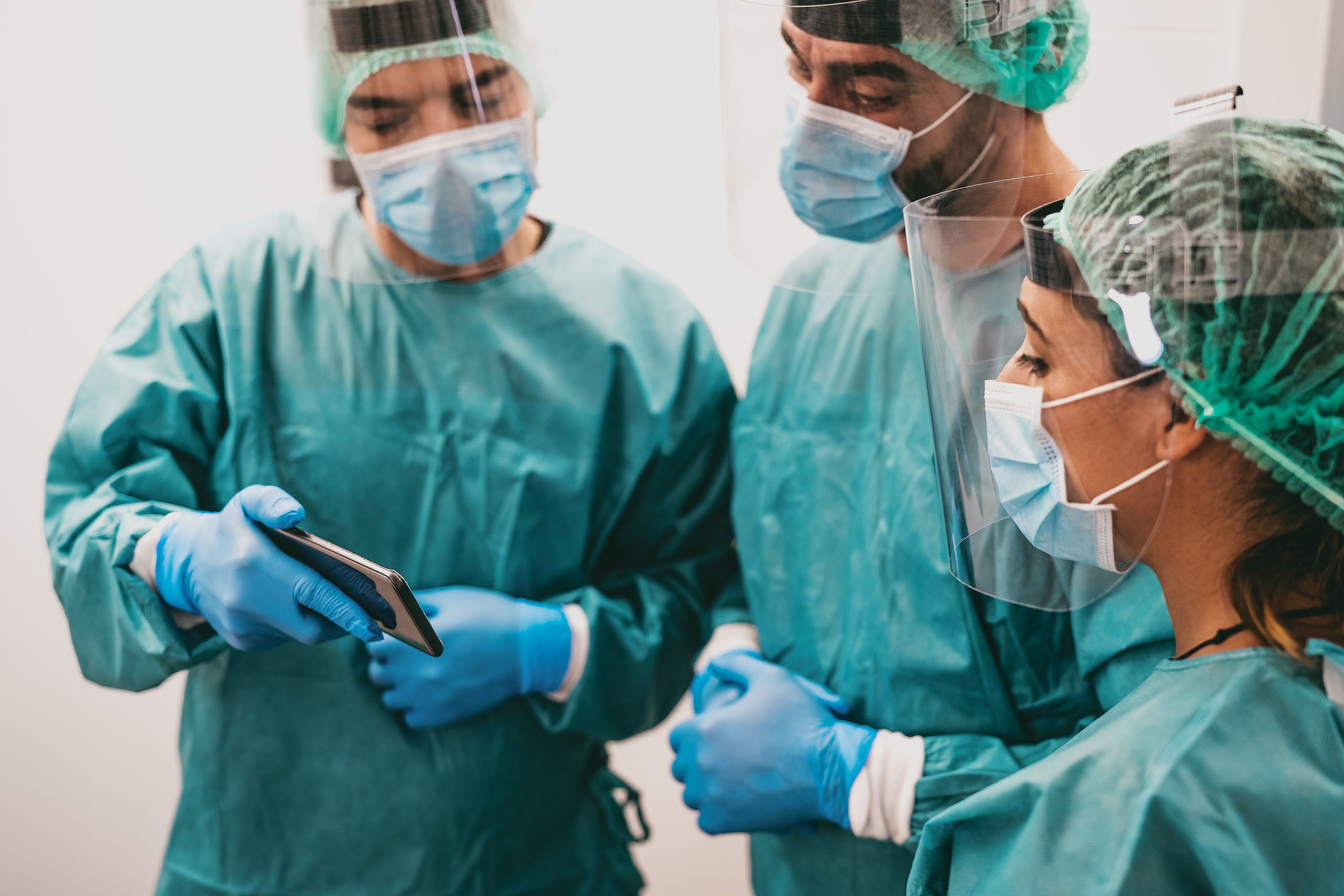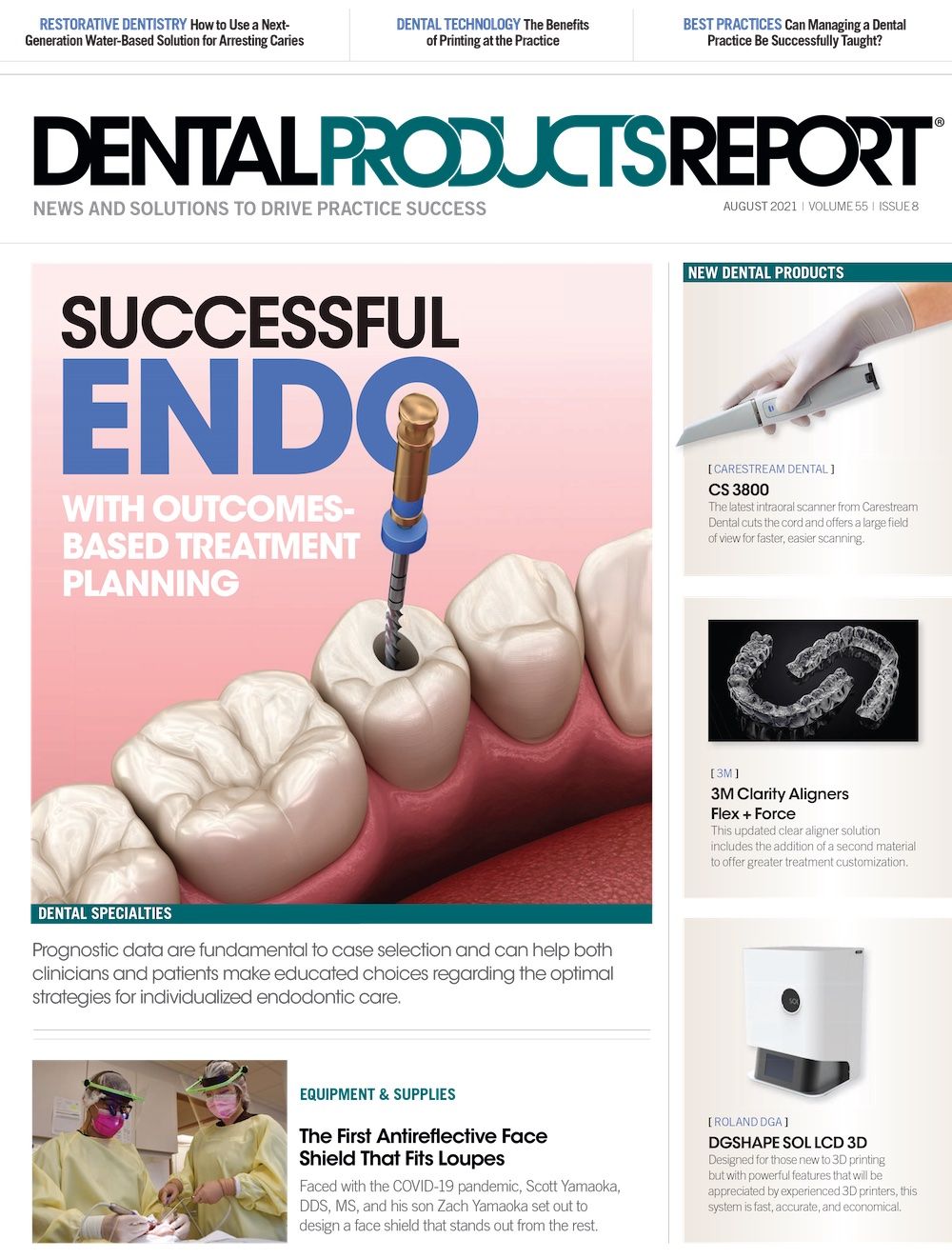One Size Doesn’t Fit All: Ensure Everyone at the Practice has the Right-Sized Protective Equipment
Ensuring that each individual is correctly fitted in their personal protective equipment will ensure a cleaner, more protected practice.
By Alessandro Biascioli / stock.adobe.com

National Institute for Occupational Safety and Health’s (NIOSH) Hierarchy of Controls demonstrates a roadmap by which healthcare workers are protected from workplace hazards. What may surprise those unfamiliar with the Hierarchy, is that personal protective equipment (PPE) is the last line of defense. As such, it is particularly important that PPE does its job effectively, and the key to that is a proper fit.
Team members come in all different sizes, and PPE needs to fit each person appropriately, and that means having the right equipment for each person.
The perfect fit
Given all the different sorts of PPE, can 1 size fit all?
“Certainly not gloves,” Dr Shannon Mills, DDS, observes. Dr Mills is a private healthcare consultant and Chair of the American Dental Association Standards Committee For Dental Products (SCDP) Subcommittee on Dental Infection Control Products. “Not really with masks, especially respirators. Surgical masks, yes. It’s pretty much one-size. There may be some variation, but as long as the medical masks fit snugly enough, what matters is there an adequate coverage of the surface you’re trying to protect? You want to keep contaminated spatter and and droplets off of your skin and your personal garments.”
Because everyone on the team is a unique size, achieving that coverage necessitates having appropriately sized PPE available.
“There’s a huge range,” Dr Mills observes. “You probably have dental assistants who might be might be 5’1”, and you have dentists who might be 6’4”, and obviously, the same size isn’t going to work for everybody. An apron or a gown that would work for your 6’4” dentist, that 5’1” dental assistant is going to be tripping over. You have to think about the areas that need to be covered if you’re wearing a gown. And, by the way, aprons are fine. Your back doesn’t get contaminated during these procedures. A lot of people open the back of the apron to be cooler, too. The main thing is you’ve got to cover your lap.”
Team members must have the right tools for the job.
“Something that I’ve noticed for years is that people would just put on a clinic jacket, or they put on a scrub top and say, ‘This is my PPE,’” Dr Mills adds. “Well, the thing is, if it’s not covering your knees and your waist, you’ve got this area that’s getting contaminated. Now, unless you have open sores on your thighs or something, and you’re wearing shorts, you’re not going to get a bloodborne pathogen, but you could still get potentially infectious agents on your clothes. You don’t take home COVID-19, you don’t take home HIV, but you could take home a cold that nobody needed to get.”
Finding the right fit
It is not as simple as just buying a few different sizes of gloves or gowns and then opening the door to patients. It is necessary to know what protection the practice needs.
“Before we even talk about the right size of PPE to get, we need to look at what PPE is necessary, and the office must conduct what’s known as a hazard assessment,” Karen Daw, “The OSHA Lady”, speaker and consultant, says. “The hazard assessment, in a nutshell, basically says, ‘OK, we’ve identified, in writing for OSHA, what hazards exist within our workplace, and then here are some engineering and work practice controls that we’re going to implement to protect against our employees against those hazards.’ And then, finally, here’s what PPE is going to be required. The employer is dictating, this is the PPE required when you’re engaged in this particular procedure. And then once you’ve decided, ‘OK, here’s the list of all the PPE we need,’ then you have to conduct what’s known as a PPE certification, and part of that PPE certification is asking questions of the team members:
- Do they understand the limitations of their personal protective equipment? Do they know the correct way to don and doff their PPE?
- Do they know the correct order to don and doff PPE the proper way?
- Do they know how to store it the proper way, to reprocess it the proper way, to maintain it? And part of it should be, does it fit correctly as well?
- Is it designed to protect the employee who’s required to wear it? Is it going to protect them to the best of its ability, and part of that consideration has to be size.
So, if I am an extra-large and you’re giving me a small or a medium, well, there are parts of me that are, potentially, going to be exposed to whatever that hazard is, whether it be spatter or spray or aerosols. And then, conversely, if I’m a petite person and I’m used to a size small, and you give me an XXL, this thing’s going to drape all over me. Not only is it not fitting me properly, but now it can also potentially get in the way of me being able to perform my job safely.”
Like street clothing, same sizes will vary from manufacturer to manufacturer. It’s a good idea to try out sizes from different manufacturers to get what fits best.
“As far as buying the PPE, sometimes it is a matter of trial and error,” Daw says. “One manufacturer’s size small might not be the same size small as another manufacturer. It’s the same with gloves or gowns. There’s no universal consensus amongst manufacturers of what those different sizes are going to be. So, for an office, it might be a matter of just of buying it and then seeing, ‘Hey, is the team happy with it?’ ‘Have they voiced concern about the ability of this personal protective equipment to protect them?’ ‘Are they not happy with the fit or the size of this PPE?’ And, if not, then maybe we need to consider another brand. It’s mostly going to be about trial and error, as far as getting the right fit.”
That doesn’t mean that the practice must be out of pocket during their quest.
“Get samples, have people try them on, make sure they tell you what size fits, and you make sure it covers them properly,” Dr Mills adds. “And then you just make sure you have enough for everybody in the practice. And you set your ordering and your reordering based on anticipated utilization.
“Now, if you don’t have anybody in your office that wears a small glove, then you don’t need to order small gloves,” he continues. “And if you don’t have anybody in your office that wears an extra-large glove or an extra-large gown, you don’t need them. You just have to find out what people need and then make your ordering match that requirement, based on anticipated use how many of these do you need a month. A lot of folks have their reorder set up with the vendors in some kind of an automated way.”
Pandemic problems
Throughout the SARS-CoV-2 pandemic, healthcare dealt with a shortage of various PPE, from masks to gloves. Those shortages added more complications to practices’ need for various-sized PPE. Happily, we seem to be out of the woods.
“Officially, there’s no longer any shortage,” Dr Mills says. “So, you can no longer use a shortage of PPE as an excuse for not following occupational safety rules. If your employee says, ‘My doctor won’t provide me the size that I need,’ and they complained to OSHA, OSHA will not accept shortages as an answer.
“You may have to look a little bit harder, but you can usually find it,” he continues. “If one vendor does not have what you need, then check different vendors until you find it. OSHA is no longer likely to accept that as an excuse.”
“For a little while, it was kind of touch-and-go with gloves,” Daw adds. “Not necessarily as far as sizing, but just the offices getting their preferred brand of gloves. We saw offices switching to another brand. And then again, that kind of poses some challenges as far as fit goes. But I think fortunately we didn’t see the case where we ran out of gloves, because if we ever ran out of gloves, we were, technically, supposed to limit or stop seeing patients at that point. If we don’t have the PPE to do our jobs safely and it’s required, then we technically need to scale back on the number of patients that are being seen. But we kept an eye on it and it looked like we didn’t experience that shortage.”
Safety first
Ultimately, the point of PPE is workplace safety and, as with so many other things, most problems can be ameliorated through proper communication.
“I implore employers to communicate with their team,” Daw says. “Employers should have an open-door policy, and continually reassure the team that they have an open-door policy around communication. And what I mean by that is if the employee has a suggestion for PPE, or any other safety matter, that the employer communicates that, ‘Hey, anytime you have that kind of suggestion, I want to hear about it.’ Because, if the employee has been saying for a while now, ‘Hey, I’ve got utility gloves, but they’re too bulky. I need a smaller size than this,’ and the employer’s not listening well, then you’re potentially opening up your practice to liability as in a complaint to and possible inspection from OSHA.”
Maintaining an open line of communication with employees, especially as PPE is concerned, is critical not only to resolve shortages and poor fits, but also to ensure that employees feel respected.
“There’s a concern regarding employee safety here,” Daw says. “And many of the employees and former employees of practices that I’ve heard contact OSHA did so because they felt like they weren’t being heard. This is a great opportunity for us to remind employers that if an employee has a concern about PPE, whether it’s size or fit, it needs to be addressed. It doesn’t be about personal preference. ‘I liked this brand of gloves because they’re blue and you’re giving me purple gloves.’ No, we’re not talking about that. But if it affects performance, if it impacts safety, then employers better listen and make sure that they remind their team members that, ‘Yes, if there’s a better, safer way of doing something, I want to hear about it.’ And not only just to protect the employee, but also to protect the practice.”

How Dentists Can Help Patients Navigate Unforeseen Dental Care
December 12th 2024Practices must equip patients with treatment information and discuss potential financing options before unexpected dental treatments become too big of an obstacle and to help them avoid the risk of more costly and invasive procedures in the future.